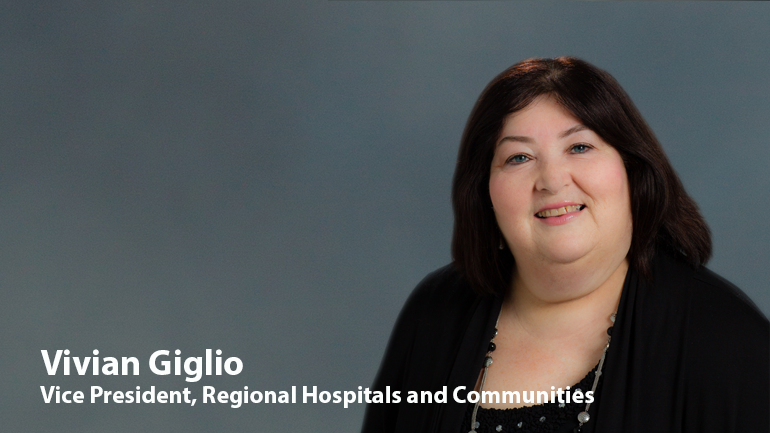The BCCPA is pleased to some thoughts from Vivian Giglio, Vice-President Regional Hospitals and Communities for the Fraser Health Authority. This was originally published on the “CEO Blog” written by Michael Marchbank, CEO. The focus of the blog relates to the “shift” of health care resources. We’re sharing it with our readers as we think you may find it of interest.
++++
Across the country – and in fact all over the world – conversations amongst health care leaders are tuned towards this concept of “shift” we talk about it so much in Fraser Health. When we talk about the shift, we are talking about moving away from a system that relies heavily on hospitals and towards a system that promotes health and wellness, prevention and management. Refining our use of hospitals and expanding community services are two ways to create a more sustainable system that better supports the health needs of our communities and citizens. Fraser Health is well positioned to make this shift a reality. Our vision Better health. Best in health care. has long stood for our organizational commitment to help people be well, stay well, get well, or manage better and when they are sick or injured, to deliver the very best care we can.

Our executive team members are committed to making decisions and organizing their portfolios to best support our efforts. I’d like to introduce them and let them tell you how they are supporting Fraser Health’s vision of Better health. Best in health care.
Our 12 regional hospitals are a crucial component of our health care system, but they aren’t the only pieces of the puzzle. We recognize that while acute care has a role to play when our patients need specialized care, for others community or home care better serve their needs and facilitate their recovery. Under the leadership of Vivian Giglio, we’re strengthening the connection between acute and community care to ensure we deliver our health services where our patients really need it.
I’d like to introduce you to Vivian Giglio, Vice President, Regional Hospitals and Communities.
++++
For me, the shift is doing right by our patients, providing them with the right care in the right place at the right time. We’ve come to realize in health care that our default, the hospital, is not always best. We know there can be increased harm that comes from staying too long in hospital, plus the separation from family means it’s not an ideal healing environment for long-term convalescence.
So we’re looking at different ways to put the health care system puzzle together to address this. Acute care has a role to play when our patients need specialized care, but when patients don’t need that level of care, we’re creating better options. We’re moving pieces into the community so that we have more health services where people really need it, allowing them to recover more swiftly at home and avoid unnecessary hospital visits. This is particularly important for our seniors and people with chronic diseases who we know do better at home.
For me, the shift is doing right by our patients, providing them with the right care in the right place at the right time.
One way we’re doing this is by moving services for patients closer to where they live. In New Westminster and Port Moody we’ve launched a new residential care intravenous therapy program that allows clients to get treatment right in their facility. We’re hoping to expand this program across the region. It makes sense: Why would we move a resident from their home to come to hospital for a routine treatment if we don’t have to? That’s just not patient-centered, and we’re working hard to keep what is best for patients at the core of what we do.
Another community health project that is really starting to take shape is our seniors prototype in Abbotsford. We have a nurse there dedicated to visiting vulnerable patients in their home. She provides frequent check-ins and connections to community services as needed. Without this intervention, these seniors might have to go to hospital. So again, we’re working more proactively to support people in their homes, rather than waiting until they show up at the door of our hospitals.
In our hospitals, we’re also making changes to tailor acute care to patient needs. We hired nurse practitioners in our acute, neurology and vascular units at Royal Columbian Hospital to work closely with patients and the multidisciplinary team. Using a holistic approach, their role is to care for patients through diagnosis and treatment to ensure a smooth transition to home. We’re also ensuring patients aren’t kept waiting in hospital if they are medically ready to go home. Our New Westminster Home Health team, for instance, is working with Royal Columbian Hospital staff to evaluate patients preparing for discharge, and help secure them the rehabilitation or home nursing they need to stay independent.
These are just a few of the innovations that are really going to shape the way we deliver health care over the next few years. I’m seeing some immense creativity from our staff around what is possible in our hospitals and communities. There are so many pieces of the health care puzzle that are in our control. It’s hard work, and we’re moving fast. But it’s invigorating when you see the possibilities and the success of some of our initiatives. It’s generating an energy that’s encouraging us to try to do more so that our patients truly benefit.





